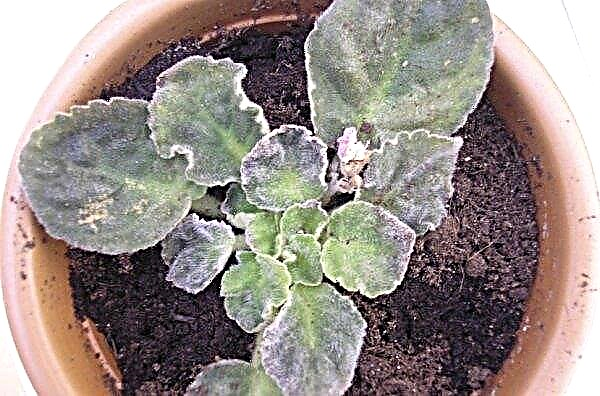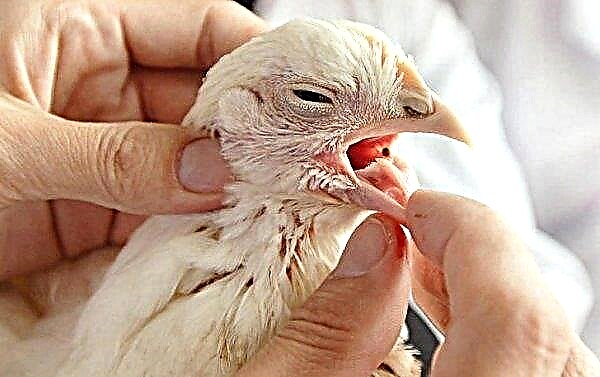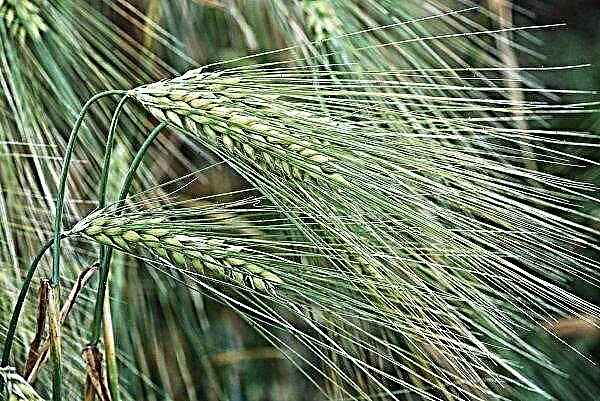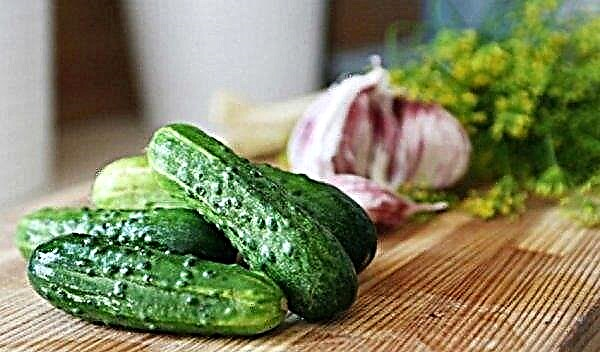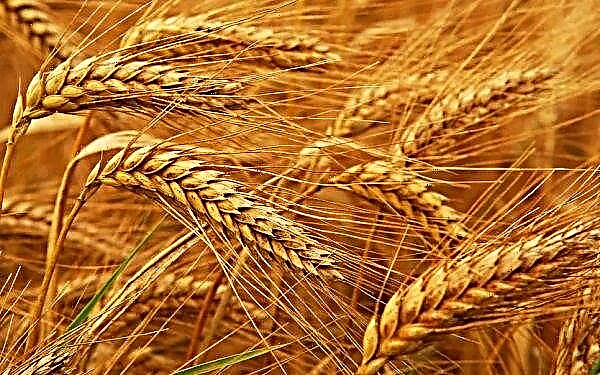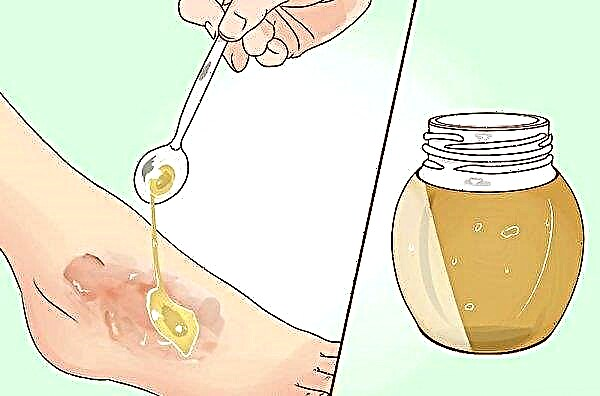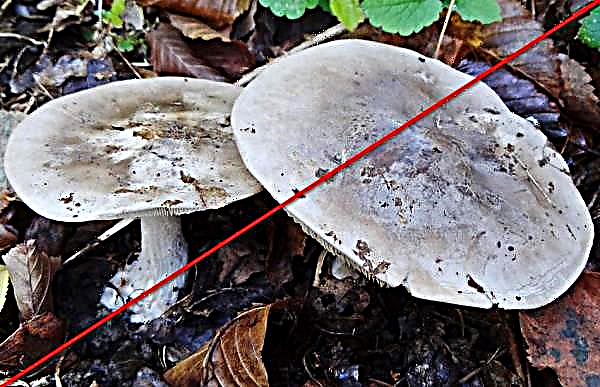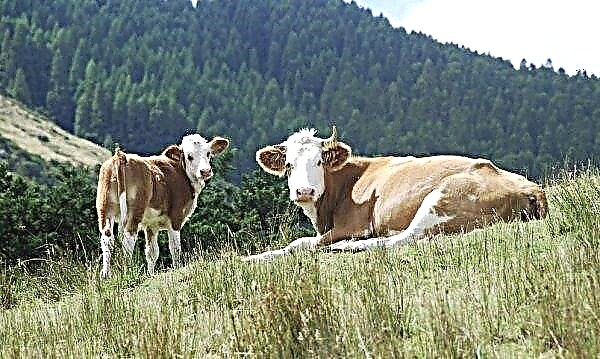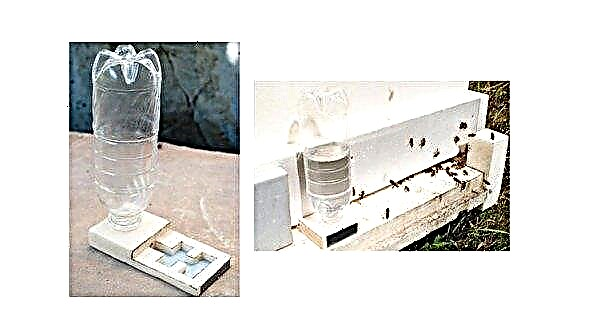Phoenix chickens are popular with many connoisseurs of decorative poultry. However, in order for the birds to really become a decoration of the yard, you will have to make a lot of efforts to care for them. What features are characterized by such hens and what you should know about the requirements for their content - read the article.
Origin of breed
Phoenix is a breed that came to us from Asian countries. The breeder country is China, although the Japanese were more popular with such chickens. The progenitors of modern standard birds are considered to be the breeds of yokohama-tosa and onadori, the breeding of which began in the Middle Ages. Due to the particularly long and magnificent tail, the breeds had a decorative value and were highly valued. Phoenix fully inherited this quality.
Did you know? Phoenix Japanese roosters are still a national treasure, often acting as an expensive present for representative citizens.
External features
The peculiarities of phoenixes have distinct sex characteristics, therefore, when buying roosters and chickens, it is worth paying attention to various aspects of their appearance.
Petukhov
The most noticeable and at the same time valuable pedigree trait of males is a long, low-set fluffy tail, which often reaches a length of 2-3 meters. The average weight of birds is 1.5–2 kg, but it is thanks to this addition that the body of the bird seems to be more voluminous.
Other characteristic features of the phoenix physique are manifested in the following:
- Head - small, complemented by a low, simple scallop, dark orange eyes and a gray-blue beak. Sometimes its color may be fawn yellow, but this combination does not look so attractive. The size of the beak is medium, so it stands out slightly on the head. The earlobes are white, small in size, with red earrings.
- Neck - medium length, slightly covered with luxurious long and narrow feathers, which often go on the back. In the lumbar zone, feathers continue to grow throughout the life of the bird, so mature individuals can boast of plumage that reaches the ground itself.
- Wings - always tightly pressed to the body.
- Drumsticks - medium size, with a dense feather coating. Metatarsus - thin and dark, with a bluish or olive tint. The limbs of the phoenixes only fix the graceful image of the bird, because the place of powerful spurs is occupied by graceful and long growths.
- Stomach - hidden under the long feathers hanging from the lower back, so it is practically not visible from the side. All feathers of the representatives of the breed are hard and narrow, regardless of what part of the body they are in.
Chicken
The weight of the chicken is slightly less than the rooster, and on average is 1.3–1.5 kg. On the small head of the females is a neat erect scallop and small catkins. The wings are tightly pressed against the body and have a smooth, dense plumage. The legs are bare, and the presence of the edge of them is a breed defect (at the same time, the presence of spurs is not considered such). The tail of the phoenix chickens is much shorter than that of the males, but it still seems unusually long. The tail feathers in this zone are saber-shaped, but in general the tail is quite lush, with covering feathers slightly rounded at the ends (often they cover the tail feathers).
The tail of the phoenix chickens is much shorter than that of the males, but it still seems unusually long. The tail feathers in this zone are saber-shaped, but in general the tail is quite lush, with covering feathers slightly rounded at the ends (often they cover the tail feathers).
The color of chickens and roosters of this breed can be the most diverse: from pure white to silver, including orange-brown and golden color. Most often, females of white or off-white color are found.
Important! One of the rarest and most attractive colors of the plumage of the described bird is wild, which provides for a smooth transition of colors from black to red-brown, with the presence of a green-black tint on the wings.
Breed productivity
Phoenix chickens are not suitable for industrial breeding, because they are not characterized by high productive qualities. The weight of one individual does not exceed 2.5 kg, and chickens carry no more than 160 eggs per year, with an average weight of about 45 g. Dwarf varieties carry even worse, annually giving no more than 60 eggs (average weight - 25 g).

Advantages and disadvantages of the breed
Before buying phoenix chickens, it is worthwhile to carefully study all the advantages and disadvantages of this breed.
- The indisputable advantages of birds will be the following characteristics:
- bright exterior;
- comparative unpretentiousness to feed;
- the possibility of walking in the winter (despite their exotic nature, these hens tolerate low temperatures well).
- The disadvantages of the content of birds include:
- the need for daily care for plumage (especially the tail, which feathered birds often collect dirt);
- low productive qualities;
- late puberty;
- the almost complete absence of maternal instinct in chickens;
- the need for a walking space (in a locked chicken coop, phoenixes will not have such an attractive appearance, moreover, in such conditions they often get sick);
- when roosters walk, they will have to carry them in their arms, or at least equip special stags in a walking place, at a height of two meters from the surface of the earth.
Features of keeping phoenix hens
Considering all the exterior features of the described breed, it is not surprising that the conditions of keeping and caring for birds will differ from similar actions when breeding chickens of other breeds. First of all, pay attention to the arrangement of the house and the walking yard, but do not forget about a suitable diet and other aspects of care.
Did you know? Interesting! The Japanese attribute to the phoenix chickens a lot of supernatural abilities, in particular, the attraction of good luck and great wealth. It is believed that with a responsible attitude and increased attention to birds, they will certainly thank their owner.
House conditions and facilities
Phoenix needs a spacious, clean and warm room, in which even in the coldest winters the air temperature will remain at + 8 ... + 12 ° С, and the humidity will not exceed 70%. In addition, do not forget about the need for a constant flow of oxygen, which will ensure properly functioning ventilation systems.
It is desirable that the floor in the chicken coop be wooden, as the concrete base is not able to retain heat. Perches are equiped at a height of at least 120 cm, always considering the length of the tail of the rooster. The litter may be straw or made of wood chips, however, in any case, you will have to constantly monitor its cleanliness.
In the chicken coop, it is useful to equip the area for the care of the plumage of chickens, with the obligatory presence of a wooden box filled with ashes and dry fine sand.
When choosing a place for the construction of a chicken coop, give preference only to an elevated area, well protected from gusts of cold wind, and choosing the material for manufacturing the structure, take care of its sufficient insulation (a good option would be a tree).
To maintain cleanliness in the chicken coop, it will have to be cleaned every day, timely removing parts of food and excrement that are stuck in the litter.
Important! Leisurely keeping phoenixes is possible for no longer than five days (for example, due to bad weather), but in the future they will have to be taken for a walk for the birds to feel good.
Walking patio
The design features of the walking fence also largely depend on the length of the feathered tail. For young individuals who have not yet managed to grow three-meter feathers, you can equip special perches in the walking area, and cover the soil in the fence with mowed grass, hay or other similar material (if the grass does not grow there).
Also, do not forget about the flight qualities of the phoenixes, allowing them to easily overcome obstacles about two meters high. For this reason, equipping roosts or installing poles, do not forget about the "roof" in this place - for example, in the form of a grid.
If there are few birds, and they all have tribal value, you can walk them like any other small animal, that is, on your hands. To fix excessively long tail feathers, they are wound on special holders.
In winter, birds can be released directly into the snow without fear for their health. With moderate walks and even eating snow, the birds should not get sick - of course, if after walking they will again be sent to a warm chicken coop.
Feeding troughs and drinking bowls
Due to the length of the tail of the phoenixes, it is inconvenient to eat directly from the floor, so drinkers and feeders are installed on an elevation next to perches. So decorative chickens can eat without straining the body and without bending a long tail.
Important! Phoenix chickens lay their first egg at the age of 6-7 months, and sometimes even later, due to the late onset of reproductive age.
Moult and egg laying break
As mentioned above, the plumage of phoenixes changes in stages throughout life, so owners will not encounter seasonal molting and termination of egg laying in chickens. A decrease in egg production may be due to other factors and, first of all, inappropriate conditions of keeping or an unbalanced diet, which, in addition to the lack of egg laying, will also be indicated by the appearance of the birds: feathers will become less shiny, and growth and weight gain may completely stop.
Adult chicken diet
Phoenix chickens are not too picky in terms of diet, however, in any case, it should be as balanced as possible, with a sufficient amount of vitamin and mineral components during the off-season period.
In the summer, the presence of fresh green fodder should not exclude the use of compound feeds or concentrated grain mixtures, which are usually given twice a day (breakfast can be soft food, and in the evening whole grains are poured into the feeders).
Since phoenixes belong to the decorative group, it is not surprising that the calorie content of the diet can be significantly reduced, with a simultaneous increase in the mineral component (for example, bone meal), which helps to improve the state of plumage and its active growth.
The approximate daily diet of one adult bird should include the following components:
- cereals - 40 g;
- succulent feed - 30–40 g;
- protein components of animal origin - 5-10 g;
- bone meal - 1 g;
- salt - 0.5 g.
In the summer, the amount of grain and succulent feeds can be reduced by about half, but they should not be completely excluded from the diet.
Breeding young
Caring for young phoenixes is slightly different from the actions performed when breeding chickens of other breeds, and the main difficulty is the lack of maternal instinct in chickens. They do not hatch eggs and are poorly related to already hatched offspring, therefore, in the initial stages of growing birds, it is often necessary to use brood hens of other breeds or special incubators.
Egg incubation
The incubation time for eggs of this breed of chickens is approximately 3 weeks, but often the chicks appear already on days 17-18, due to the small size of the eggs. After the appearance of the young, on the first day the chicks are kept under an infrared lamp, and then they “pour” it under the chosen brood hen so that she will teach them the basics of chicken life.
If a brood of the same breed is chosen for these purposes, it is best not to let it out of the chicken coop for five days, otherwise it may quickly forget about its “maternal responsibilities” and abandon the brood.

Chick Care and Feeding
Care for recently appeared chickens of the described breed is based on maintaining a sufficient temperature in their habitat (on the first day no lower than + 25 ° C), timely cleaning and feeding according to a pre-compiled diet.
The best option for the first time would be the following menu (in grams per head):
- 1–5 day of life: 2 g of boiled eggs, 1-2 g of fat-free cottage cheese, 1 g of greens and 2 g of grain feed;
- 6-10 day: 3 g of eggs, cottage cheese and cereals, 5 g of greens and 0.5 g of mineral feed;
- 11-20 day: 5 g of cottage cheese, 10 g of greens and cereals, 1 g of mineral feed (eggs can be replaced with crushed boiled potatoes, but not more than 4-5 g per chicken per day);
- 21-40 day: 6 g of fat-free cottage cheese, 12 g of herbs, 15 g of potatoes or cereals, 1.5 g of mineral additives.
If you do not have the opportunity to prepare compound mixers, it is worth considering the option of buying ready-made feed mixtures that can be used starting from ten days old chickens. Consumption rates and rules of delivery are usually indicated on the packaging.Did you know? From the very first days of their life, chickens can remember more than 100 faces, recognize the owner from a distance of 10 m and are perfectly oriented in time. If one of the birds is removed from the chicken coop, and then returned back, relatives will easily take it back, since it still remains “their own” for them.
Vaccination of young animals
Vaccination of young individuals, regardless of their breed, is a great way to protect the livestock from mass diseases. However, in this matter it is important not to miss the moment suitable for vaccination: for example, only the vaccination of daily chickens will save Marek’s disease, and in the future, the use of such a vaccine will not bring the desired result.
Other important injections that are performed only once in a lifetime are vaccinations against coccidiosis, laryngotracheitis, and an infectious disease of the Fabricius bag. Every year, chickens are vaccinated with salmonella, atypical plague, adenovirus, infectious bronchitis vaccines.
The method of administration of the drug depends on its type and can be performed both orally and through subcutaneous injection.
Features of Phoenix Chickens Care
In general, caring for chickens, the phoenix provides the same actions as when raising birds of other breeds, and the main difference is only in the need for caring for the plumage. If the tail of the rooster does not exceed one meter, then he himself is able to take care of it, and you will only need timely cleaning in the chicken coop and control of the plumage: in case of severe pollution, you will have to carry out cleaning measures manually.
In addition, twice a week it is useful to carry out disinfection in places of keeping chickens, with the obligatory cleaning of all equipment, feeders and drinkers.
Chickens Disease
When growing phoenix chickens, the owner may encounter all the diseases that other varieties of birds suffer from. The most difficult age is always the first 20 days, so timely vaccination during this period can save you from many serious problems, the main symptoms of which are rapid breathing, lack of appetite, the appearance of lameness when walking and rolling your eyes.
Among the most common diseases of phoenix chickens are the following infectious diseases:
- Typhoid fever - an infectious disease, which is accompanied by the appearance of liquid yellow foamy feces, rapid breathing, loss of appetite and the appearance of intense thirst. The catkins and crest turn pale; some chickens can throw their heads back. For the treatment of birds, neomycin and biomycin are prescribed, and sick individuals are immediately isolated from a healthy livestock.

- Pasteurellosis (in acute and chronic form) is another ailment of an infectious origin, the main manifestations of which are heavy breathing with clearly audible wheezing, the appearance of green feces, sometimes with an admixture of blood. With the development of the disease, joints swell, discharge from the nose appears, and scallops and catkins change their color to blue. The appetite is completely absent, due to which the weight of the bird is significantly reduced. To eliminate the problem, sulfamethazine is used, and part of the green feed is increased in the diet. For preventive purposes, healthy individuals are vaccinated.

- Salmonellosis An infectious disease that often affects young chickens. The main symptoms of the disease are severe tearing of the eyes, swelling of the eyelids, developmental retardation and shortness of breath. The bird becomes lethargic, refuses food, but drinks a lot. Treatment involves drinking furazidol for 20 days, in two consecutive courses, but with a week break between them.

- Marek's disease - A viral disease that spreads quickly between birds and causes impaired motor activity. Other symptoms include pupil constriction (sometimes even complete loss of vision), loss of appetite, and significant weight loss. Unfortunately, effective methods of treating this ailment have not yet been developed, which means that the entire population is subject to euthanasia. A reliable preventive measure is vaccination of daily chickens.

- Bird flu - affects the respiratory and digestive systems of birds, which is accompanied by fever, the appearance of diarrhea and hoarse breathing. Earrings and scallops acquire a bluish tint. It is impossible to cure the disease, therefore, when the above symptoms appear, all birds are subject to euthanasia, and quarantine is declared on the farm.

In addition to the ailments described above, phoenix chickens can also suffer from invasive diseases, that is, caused by the activity of various parasites: peroids, feather ticks, fleas, worms. The common symptoms for any of them will be the restless behavior of the bird and the loss of an attractive appearance (a feather may fall out or holes appear on it). In some cases, the birds refuse to feed and lose weight. In the fight against parasites, a variety of aerosols and oral preparations are used, which are evaporated by the birds along with water.
A separate problem when breeding phoenix chickens is deficiency of vitamins and beneficial minerals. For example, with a lack of vitamin A in birds, their eyes become cloudy, appetite disappears and a critical decrease in body weight is observed. Vitamin B deficiency leads to head tipping, circular motion and paralysis of the legs, and because of the limited amount of vitamin D, rickets often develop, in which the physique seems disproportionate.
Prevent any of these problems will help timely prevention, based on vaccination, compliance with the requirements for care and nutrition of both young and adult livestock of chickens.Thus, the phoenix breed is definitely not for those who breed poultry in order to easily get eggs or meat. However, if you want to surprise your guests or just be a fan of exotic birds, then this breed is exactly what you were looking for.







